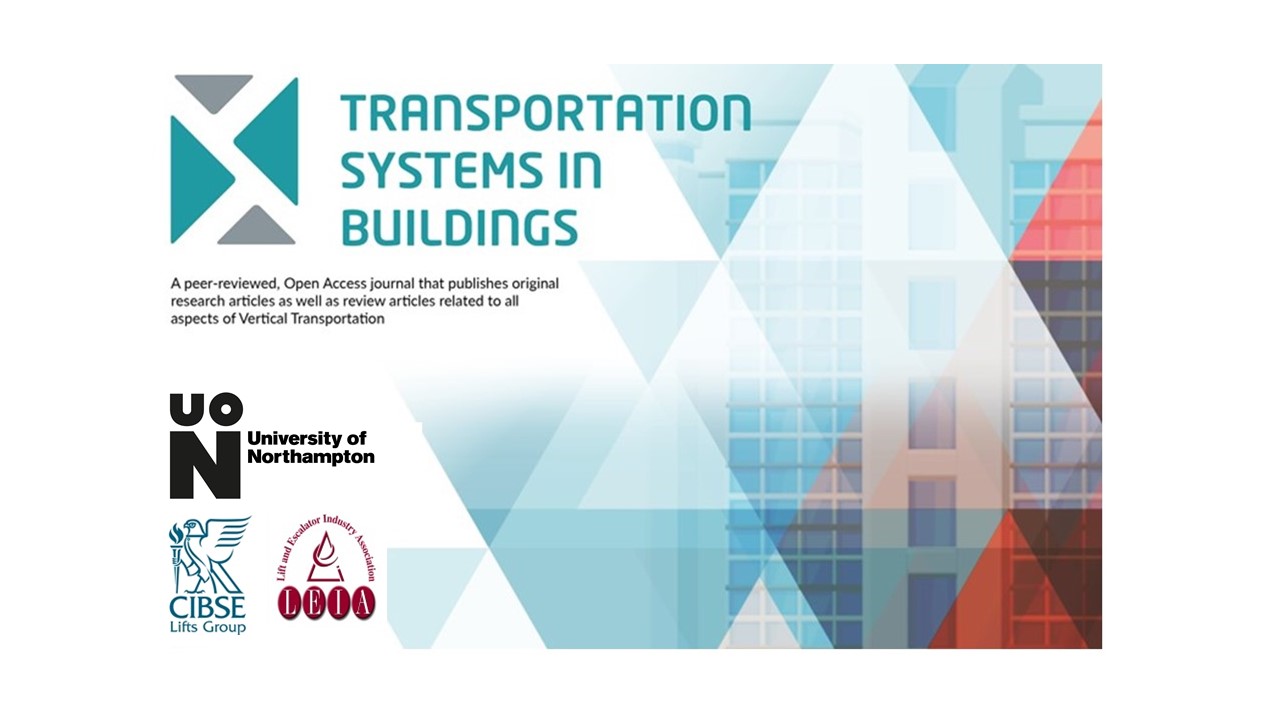An In-depth Study on RTT-HC-MTT Relationship for Passenger Demand beyond Elevator Contract Capacity by Simulation
DOI:
https://doi.org/10.14234/tsib.v5i1.169Keywords:
Elevators, Universal round trip time, Handling capacity, Transit time, Contract capacity, Monte Carlo simulationAbstract
The traditional elevator system design practice is to calculate the round trip time (RTT) and associated parameters of pure incoming traffic during up-peak, followed by real-time computer simulation. Recent studies indicated that the normal traffic is much more complicated, consisting of a mixture of incoming, outgoing and interfloor patterns. The Universal RTT, under such complicated traffic patterns, was analytically developed eight years ago based on the concept of an appropriate origindestination matrix describing the passenger transit probability, and verified by Monte Carlo simulation. That model is based on the assumption that the total number of passengers demanding service within one round trip is limited to the elevator contract capacity, which is in line with the traditional up-peak incoming RTT formula. The idea of extending the consideration to beyond the contract capacity was initiated two years ago. In this article, an in-depth study on such consideration is carried out so that the performance such as RTT, handling capacity (HC) and mean transit time (MTT) etc. under different traffic patterns is evaluated and analyzed with the help of Monte Carlo simulation. This article may help designers optimally size an elevator system during the RTT calculation stage without oversizing it if the prevalent traffic patterns of the building are known.
References
Al-Sharif L., Alqumsan A. and Khaleel R. (2014), "Derivation of a universal elevator round trip time formula under incoming traffic", Building Services Engineering Research and Technology, Vol. 35, No. 2, pp. 198-213.
Al-Sharif L. and Alqumsan A. (2015a), "An integrated framework for elevator traffic design under general traffic conditions using origin destination matrices, virtual interval, and the monte carlo simulation method", Building Services Engineering Research and Technology, Vol. 36, No. 6, pp. 728-750.
Al-Sharif L. and Alqumsan A. (2015b), "Stepwise derivation and verification of a universal elevator round trip time formula for general traffic conditions", Building Services Engineering, Research and Technology, Vol. 36, No. 3, pp. 311-330.
Barney G. (2022), "Rated load and maximum available car area - a proposal to revise EN81-20, Table 6", Proc. 13th Symposium on Lift & Escalator Technologies, Northampton, pp. 5.1-5.12.
CIBSE Guide D: 2020 (2020), Transportation Systems in Buildings, CIBSE.
Barney G. and Al-Sharif L. (2016), Elevator Traffic Handbook, Theory and Practice, 2nd Edition, Routledge, Oxon.
So A.T.P. and Suen W.S.M. (2002), "Assessment of real-time lift traffic performance", Building Services Engineering Research & Technology, Vol. 23, No. 3, pp. 143-150.
Peters R. (2013), "The application of simulation to traffic design and dispatcher testing", Proc. 3rd Symposium on Lift and Escalator Technologies, Northampton, pp. 128-139.
ISO 8100-32: 2020 (2020), Planning and Selection of Passenger Lifts to be installed in Office, Hotel and Residential Buildings.
Peters R., Smith R. and Evans E. (2011), "The appraisal of lift passenger demand in modern office buildings", Building Services Engineering Research and Technology, Vol. 32, No. 2, pp. 159-170.
Kuusinen J-M., Sorsa J., Siikonen M-L. and Ehtamo H. (2012), "A study on the arrival process of lift passengers in a multi-storey office building", Building Services Engineering Research and Technology, Vol. 33, No. 4, pp. 437-449.
Kuusinen J-M., Sosa J., Siikonen M-L., Hakonen H. and Ehtamo H. (2017), "People flow in buildings", ORMS-Today, Vol. 44, No. 2, pp. 42-46.
Siikonen M-L. and Sorsa J. (2018), "People flow analysis in lift modernization", Proc. 8th Symposium on Lift and Escalator Technologies, Northampton, pp. 10.1-10.10.
Sorsa J., Kuusinen J-M. and Siikonen M-L. (2013), "Passenger batch arrivals at elevator lobbies", Elevator Technology 19, Proc. Elevcon USA 2012, reprinted in Elevator World, Vol. 61, No. 1, pp. 108-120.
Sorsa J., Siikonen M-L., Kuusinen J-M. and Hakonen H. (2021), "A field study and analysis of passengers arriving at lift lobbies in social groups in multi-storey office, hotel and residential buildings", Building Services Engineering Research & Technology, Vol. 42, No. 2, pp. 197-210.
So A., Al-Sharif L. and Chan R. (2022a), "Universal elevator round trip time calculation for general traffic conditions with extension to batch arrivals", Building Services Engineering Research & Technology, Vol. 43, No. 5, pp. 539-557.
Hakonen H. and Siikonen M-L. (2008), "Elevator traffic simulation procedure", Elevator Technology 17, Proc. of Elevcon 2008, IAEE, Thessaloniki, pp. 131-141.
So A. (2022b), "A study on universal round trip time analysis for passenger demand beyond elevator contract capacity by Monte Carlo simulation", Building Services Engineering Research & Technology, Vol. 43, No. 4, pp. 439-460.
Appleby M. and Peters R. (2020), "The round trip time simulation: Monte Carlo implementation and consistency with other techniques", Proc. of 11th Symposium on Lift and Escalator Technologies, Northampton, pp. 15.1-15.9.

Downloads
Published
How to Cite
Issue
Section
License
The author(s) must warrant that an article is original and the sole work of the author(s); the author(s) must also obtain relevant permissions from any third-party copyright holders. Where an article or report has more than one author, the submitting author is responsible for ensuring that all other authors agree to the terms of submission.
Copyright and associated moral rights in works published in Transportation Systems in Buildings are retained by the authors. Authors grant to The University of Northampton and Transportation Systems in Buildings non-exclusive rights to reproduce works electronically (in full or in part) and to publish works in any such media current or later developed. By virtue of their appearance in this open access journal, works may be used freely, with proper attribution, in educational and other non-commercial settings.
